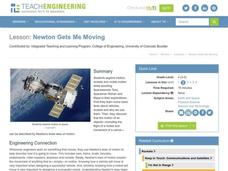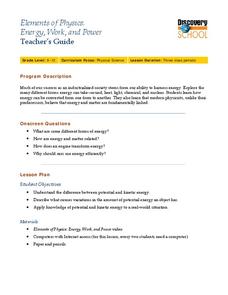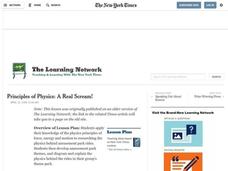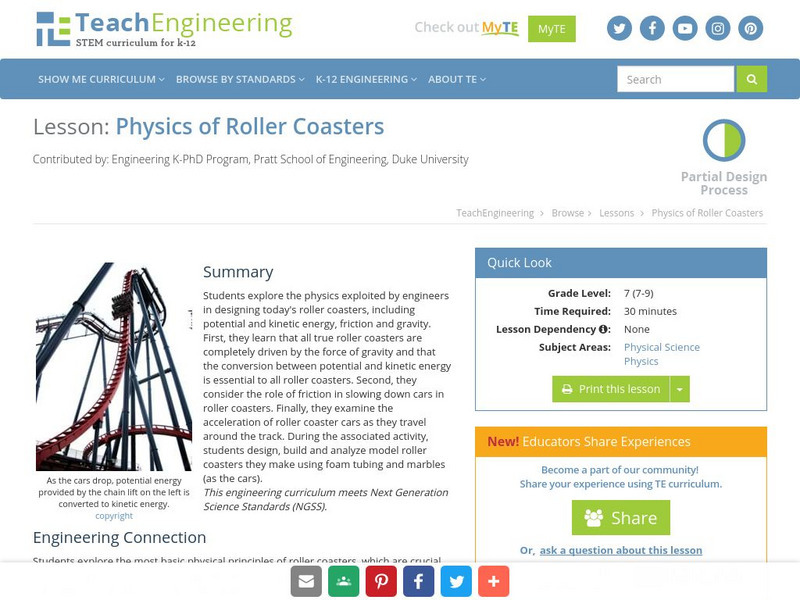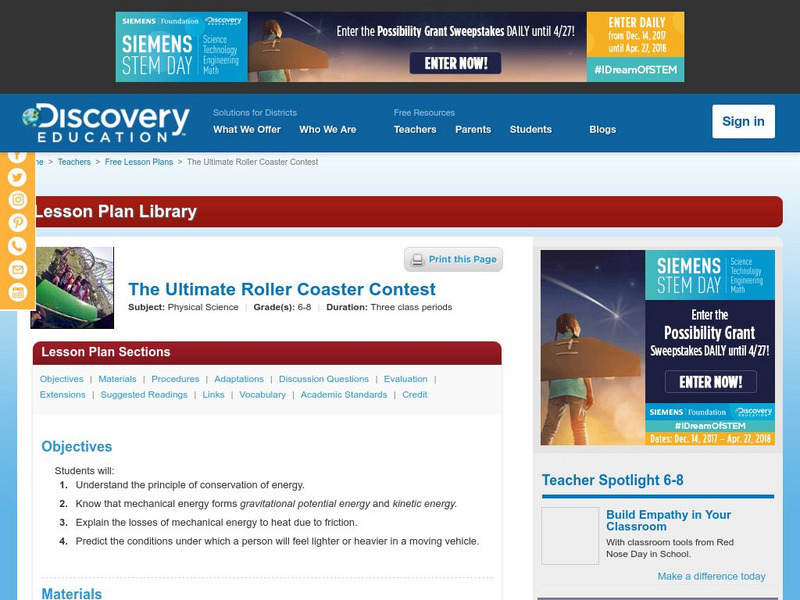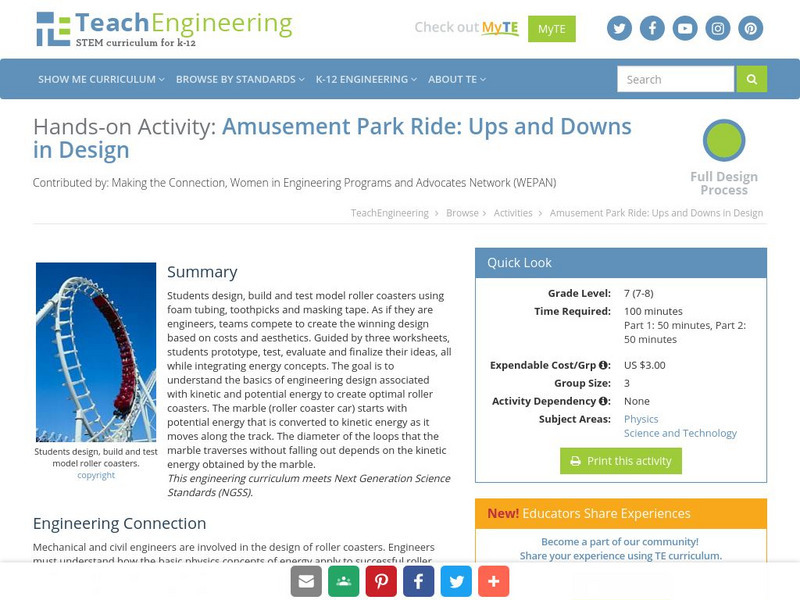Curated OER
Gravity, Forces, and Inertia
Students participate in assessments involving gravity, forces, and inertia. They select from a menu of options assessments they would like to complete including worksheets, drawing posters, watching videos, creating crossword puzzles,...
Curated OER
Elements of Physics: Energy And Work
Students examine the difference between potential and kinetic energy. In this energy lesson students view a video and apply these energies to real world situations.
Curated OER
Newton Gets Me Moving
Students discuss Newton's laws of motion. The conduct motion experiments by building "Newton Rocket Cars" from assorted materials. They propel the cars with rubber bands and wooden blocks and record the distance traveled on data sheets.
Curated OER
TE Lesson: Kinetic and Potential Energy of Motion
Students investigate the difference between potential and kinetic energy. They examine the formulae associated with both types of energy. They complete how quickly a pendulum with swing by converting potential energy into kinetic energy.
Curated OER
Energy, Work and Power
Students examine the differences between potential and kinetic energy. In this physics lesson students view a video and apply what they learn about energy to apply it to real world situations.
Curated OER
Principles of Physics: A Real Scream!
Students apply their knowledge of the physics principles of force, energy and motion to researching the physics behind amusement park rides.
Curated OER
It's All about Expression
First graders practice rereading selected passages to improve their reading fluency. Working in pairs, 1st graders read and reread decodable, leveled passages. They create a tape recording of their reading to assess their fluency and use...
Curated OER
The History of Computers
Students study the people and inventions related to computers. They research famous people for each invention they created and create a timeline of the inventor and his inventions. They present an oral presentation about the person for...
Curated OER
Do You See What I See?
Students participate in a reading skills lesson to improve reading comprehension. The skill of visualization is taught and practiced to help them better understand the plot of a story.
Other
Hstry: Roller Coaster Design Brief Template
Interactive site by STEM teacher Mariana Garcia-Serrato in a lesson on physics in which students design, budget for and analyze their own roller coasters.
TeachEngineering
Teach Engineering: Physics of Roller Coasters
Students explore the physics utilized by engineers in designing today's roller coasters, including potential and kinetic energy, friction, and gravity. First, students learn that all true roller coasters are completely driven by the...
Utah Education Network
Uen: Trb 3:4 Investigation 4 Roller Coaster Fun
Third graders will design and build a roller coaster to help understand gravity.
Discovery Education
Discovery Education: The Ultimate Roller Coaster Contest
Students design and build a three hill "tennis ball" roller coaster made of cardboard. During the design and building process, students explore the concepts of potential and kinetic energy and how they change as the roller coaster...
Annenberg Foundation
Annenberg Learner: Design a Roller Coaster
An interactive lesson where students design and build their own virtual roller coaster. Choose the height of the hills. the shape of the hills. and loop to find out if you successfully used physics concepts to pass the safety and fun...
Annenberg Foundation
Annenberg Learner: Amusement Park Physics: Roller Coaster
This interesting and interactive exhibit demonstrates how Newton's Laws of Motion impact the design and safety of roller coasters.
Other
Funderstanding: Roller Coaster Game
Design your own thrilling coaster and learn about energy and friction.
TeachEngineering
Teach Engineering: Amusement Park Ride: Ups and Downs in Design
This unit has students design and build foam tubing roller coasters. The design process integrates energy concepts as they test and evaluate their designs that address the task as an engineer would. The goal is for students to understand...
Alabama Learning Exchange
Alex: This Is How We Roll!
Learners take on the role of engineers who need to design a roller coaster. They will explore the history of roller coasters, the different types, and the many things that can affect the success or failure of a roller coaster. Finally,...
ABCya
Ab Cya: Make a Treehouse
Design the treehouse of your dreams with ABCya's Make a Treehouse! Choose from tree types, wood varieties and more. Would you like to build a house in a rainbow eucalyptus tree? No problem! How about a roller coaster entrance, and a...
Science Education Resource Center at Carleton College
Serc: Investigating Speed and Velocity
In this investigation, students will work in groups to design a model roller coaster, which will be used to clock the fastest speed for the rider (ball bearing/marble) The groups will build roller coaster models and modify and adjust...
TeachEngineering
Teach Engineering: Energy of Motion
By taking a look at the energy of motion all around us, students learn about the types of energy and their characteristics. They first learn about the two simplest forms of mechanical energy: kinetic and potential energy, as illustrated...




